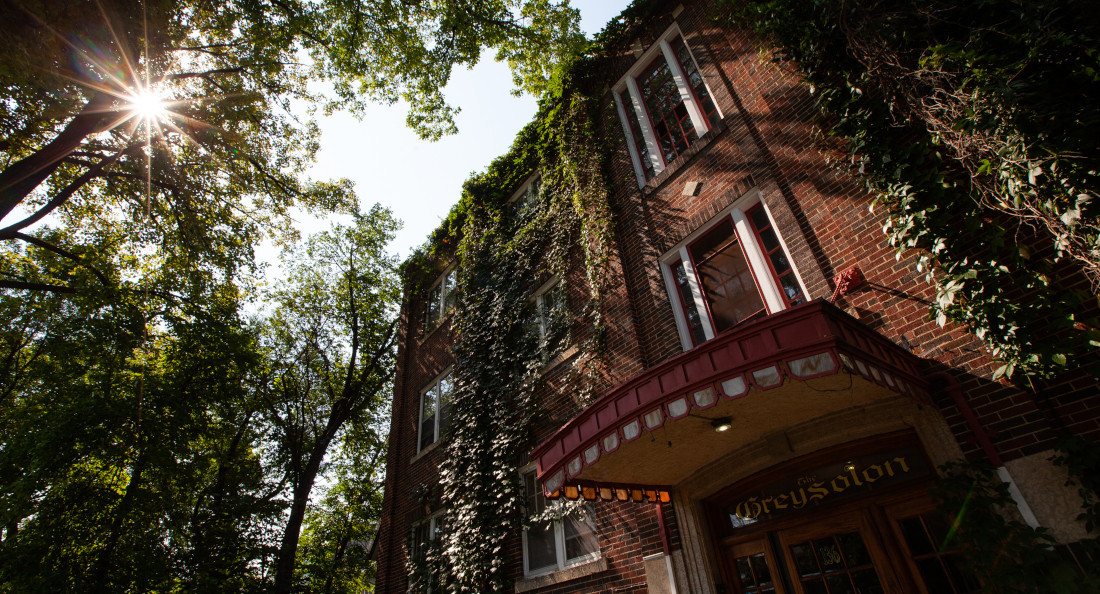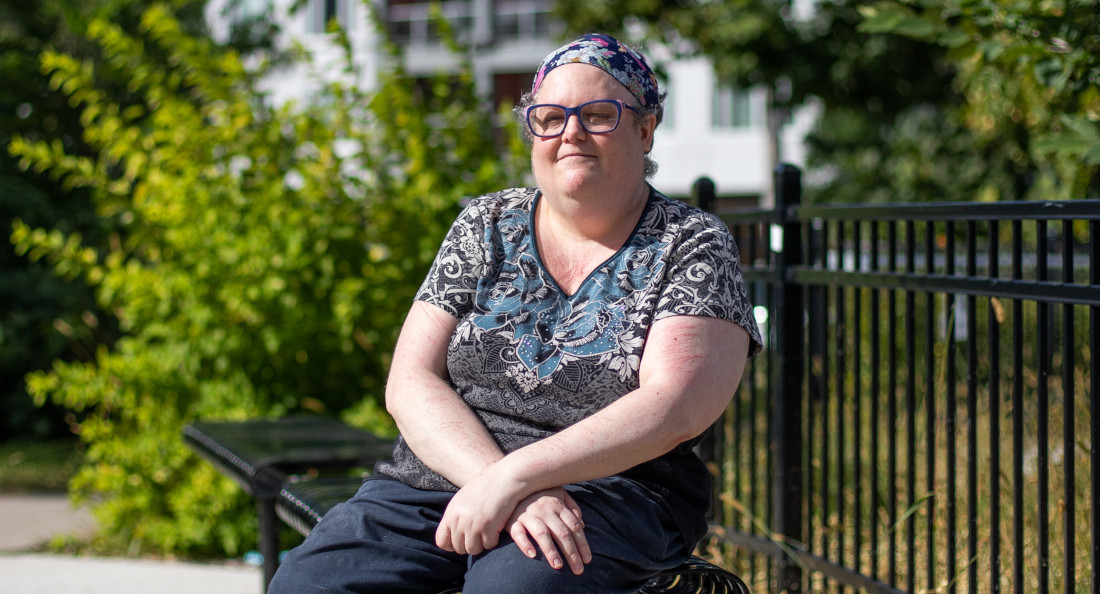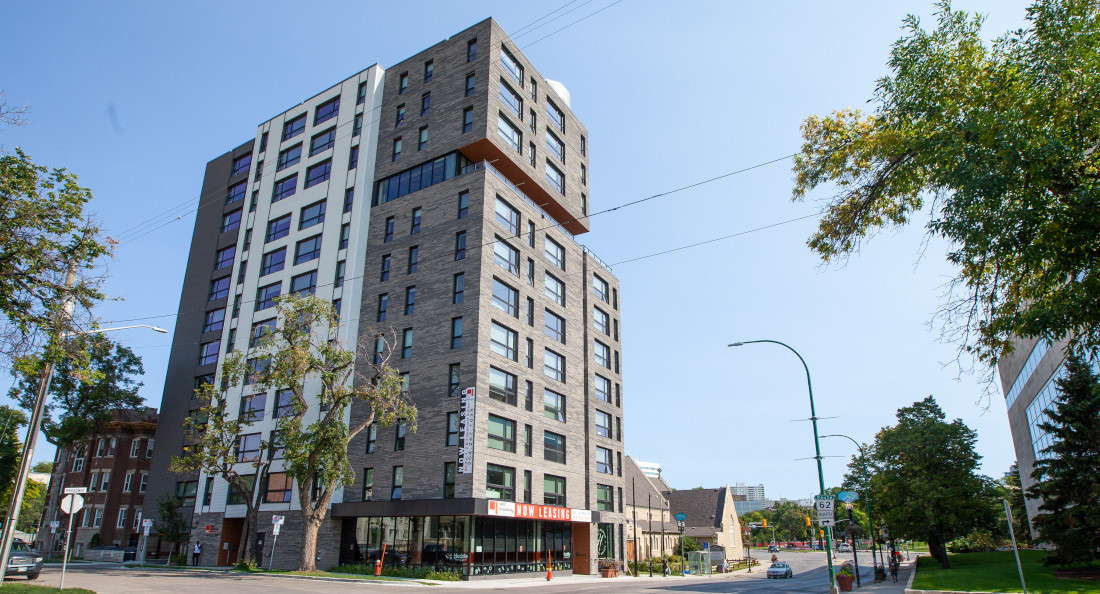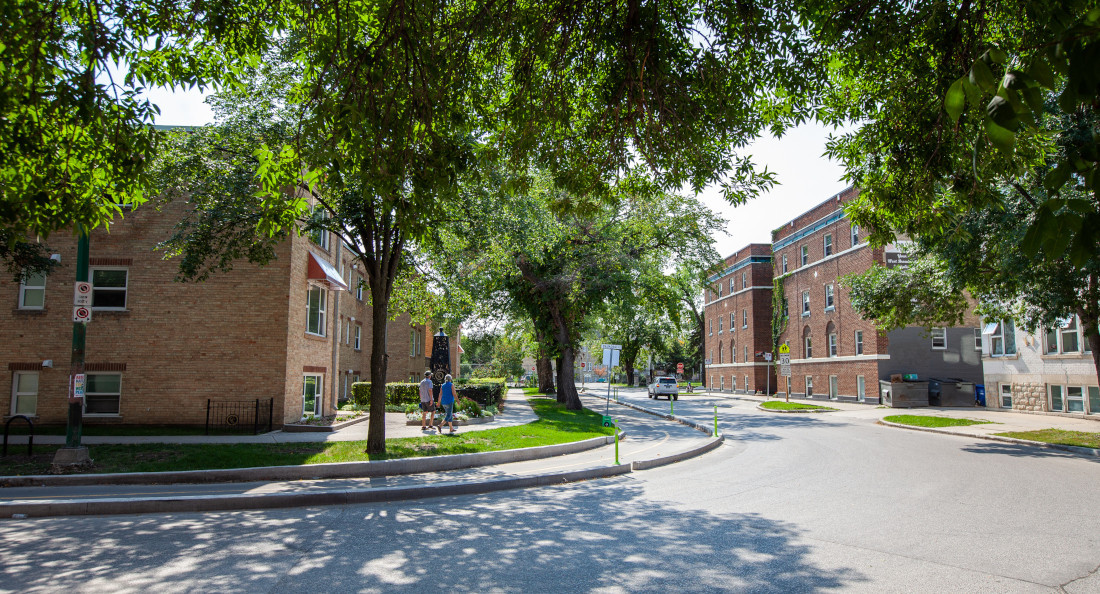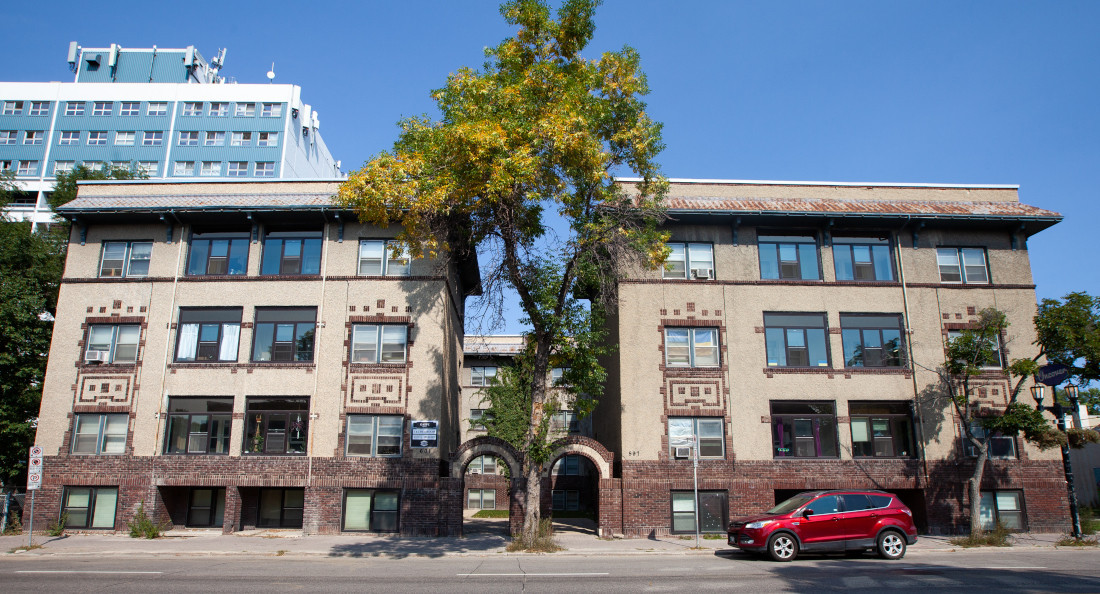Building tenant power in West Broadway
Organizing is at the heart of the neighbourhood
Like many who call West Broadway home, Samantha Smith loves the convenience of grocery stores within walking distance, bus routes in all directions and community services right outside her door.
Bordered by Portage Avenue on the north side, Maryland Street on the west, Balmoral and Colony to the east and Cornish Avenue on the south, more than 90 per cent of residents in West Broadway are renters, and many are low-income.
In the seven years that Smith has lived in the area, she’s witnessed a handful of changes. Former rooming houses were converted into luxury condos. Several businesses that had called the neighbourhood home were shuttered by the economic forces of the COVID-19 pandemic.
But the change she feels most is the weight of increasingly unaffordable rents in the area.
“The inner part of the city is starting to become more unaffordable,” Smith says. Builders “are encouraged to make these condos or high-priced apartments to build up the inner city.”
In 2017, Smith became one of the first members of the West Broadway Tenants Committee. For five years, the committee has been working to build tenant power in the neighbourhood, educating renters on their rights and campaigning against unjust rent increases.
Amid a growing affordability crisis in Winnipeg, the committee wants to ensure West Broadway’s residents are not displaced by surging rents, and they’re doing so collectively.
As a disability rights advocate, Smith believes that housing affordability and disability justice are deeply intertwined.
“The reason I got involved with (tenant organizing) to begin with was because of disability housing issues,” Smith says. “Most of us in this province either can’t work, or we can’t get paid enough in the work to be fully self-sufficient, which means we have to rely on (Employment and Income Assistance) disability.”
In Manitoba, an individual with no children living on disability benefits receives a monthly income of $1,093. Yet, according to a report published in August by the rental platform Zumper, the average price of a one-bedroom apartment in Winnipeg is $1,330, making it virtually inaccessible for people who live on disability benefits alone.
Before she moved to the neighbourhood, Smith found herself in neglected, unsatisfactory living situations. She says this is often the case for people living on disability supports.
“It took me 17 years to get a safe building to live in. I didn’t get a safe building to live in until I moved to West Broadway,” Smith says. “I lost people to unsafe conditions.”
Now, Smith fears she’ll be displaced from the neighbourhood she’s proud to call home.
Fighting against rent hikes
A skip away from where Smith lives, residents of a Langside Street apartment complex became the newest members of the committee in February.
When Brendan Devlin heard that Onyx Property Management planned to raise the rent of his suite on Langside by 22 per cent in February, he started reaching out to other residents in his building.
Not long after becoming privy to the increase, Devlin and his neighbours connected with the West Broadway Tenants Committee for help.
“We soon realized that Onyx, our landlord, had given us an outdated form for the rent increase,” Devlin alleges. “It didn’t have the correct instructions for submitting objections.”
Onyx Property Management did not respond to a request for comment at the time of publication.
For the 2022-2023 calendar year, the Residential Tenancies Branch (RTB) – the government body that mediates and regulates tenant-landlord affairs – set the rent guideline increase at zero per cent, effective Jan. 1 of each year.
But that didn’t mean that rents didn’t go up.
For years, landlords have applied for above-guideline rent increases, which allow them to surpass the rent-increase guideline. Oftentimes, the proposed increases surge into double digits.
The rent hikes are often justified by small renovations. In Devlin’s case, a notice was slipped into his mailbox after the hallways were updated with laminate floorings and fresh grey paint.
After receiving notice from the RTB that they could come view the landlord’s application, Devlin and his neighbours learned that the increase had inexplicably dropped to 14.3 per cent.
They then filed formal objections, which lowered the rent by 1 per cent.
And today, they wait.
“At this point, we’re just waiting to hear back,” Devlin said. “It’s been since June.”
Historical roots of tenant organizing
Tenant activism has indelibly transformed West Broadway, Jino Distasio, a professor of geography at the University of Winnipeg and co-author of Divided Prairie Neighbourhood, says.
“Tenant or resident organizing within the neighbourhood goes back to the ’60s,” Distasio says. “Over that 40 to 50 year period, we’ve seen waves of different ways in which local residents have influenced the direction of the neighbourhood and some of the policies.”
There’s the old adage that the opening of a coffee shop is the universal symbol of gentrification in a neighbourhood. Over the years, West Broadway welcomed an influx of third-wave coffee brewers, vegan food joints and craft-beer gardens some might view as telltale signs of it.
However, Distatio believes the issue of displacement is much more complex than narrowing it down to gentrification. Former rooming houses in the area have increasingly been converted into condos and duplexes, driving up rents and even displacing residents.
“The upward-trending housing market has pushed people to explore converting to condos,” Distasio says. “We’ve seen this very slow, but painful for a lot of individuals, transformation of the housing market that’s really cut off the lowest end of the affordability scale.”
On the other hand, non-profit and coop housing in the area has allowed the cost of some units to remain relatively stable. In response to fears of growing unaffordability in the area, the Westminster Housing Society established its first housing co-op in 1995 to provide safe, affordable housing to low-income residents.
Today, it boasts over 100 affordable housing units.
Manitoba’s public-housing policy plays a role in the availability of affordable units, as well. A report published by the Canadian Centre for Policy Alternatives (CCPA) in October 2020 concluded that KPMG – a private consulting firm hired by the Manitoba government to inform its housing policy – pushed the privatization of public housing as a cost-effective solution in the Fiscal Performance Review from 2017.
Tenant issues with the RTB have also been frequently documented. The RTB did not respond to a request for the 2022- 2023 above guideline rent increase statistics by the time of publication. However, in the 2019 to 2020 fiscal year, the RTB received 310 requests for 20,000 different units to raise rents higher than the 2.4 per cent increase threshold.
The RTB approved every single one of them.
“It’s hard not to go through this process and not come out feeling like it’s kind of meant to protect landlords,” Devlin says about his experience dealing with the RTB.
Stronger together
If there’s anything Devlin takes away from his time in committee meetings with his neighbours, it’s that building community power is imperative in weathering the affordability crisis.
“I think every one of us came to those meetings feeling like we’re going up against the person that owns our home. Where’s the power there?” he says. “What felt like individualized problems that just happened in our apartment are shared by a lot of people in our building.”
At the Langside Street complex, the fight against above-guideline rent increases continues. A 22 per cent increase that became a 14.3 per cent increase now sits at 13.3 per cent raise. It’s been a few months of radio silence from the RTB, but Devlin is hopeful that collective action will result in a successful outcome.
“I don’t think it’s possible to do (this) individually,” Devlin says. “I think it’s very easy for landlords and the RTB to just write off an individual complaint. But, you know, if you have a whole building or several buildings, it kind of changes the equation.”
With skyrocketing inflation rates jolting the cost of living, the future of the working-class neighbourhood is in a state of limbo.
“It’s going to take us a little while to absorb the real impacts of the pandemic on affordability and quality of life in a lot of our communities,” Distasio says.
Smith believes the time to crack down on unjust rent increases is now.
“Something needs to be done, because there are a lot of people out there who are having trouble affording a place to live,” Smith says. “People are going to wind up homeless if something doesn’t get done.”
If there’s one feature that prevails throughout the neighbourhood’s evolution, it’s the undying desire to see positive change. History tells us that collective action gets the goods in West Broadway.
“If we know anything about West Broadway, it’s that there is perhaps no other place in Canada that displays the (same) level of community resiliency,” Distasio says.
Published in Volume 77, Number 01 of The Uniter (September 8, 2022)

